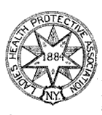Women's Health Protective Association
They assembled in the parlor of one of the women to talk over the situation and devise some plan of concerted effort that could be brought to bear upon the New York City Metropolitan Board of Health to induce it to abate this nuisance.
[1] In November, 1884, eleven women residing on Beekman Hill, whose houses were located on a high bluff overlooking the East River, were so outraged at the continuance of the foul odors which polluted the atmosphere of the entire neighborhood, causing them to keep windows closed in the hottest weather, and depriving them of their right to pure air, that they resolved to investigate the cause of this nuisance.
They formed committees to investigate the water supply, gas houses, school hygiene, street cleaning, garbage disposal, sewer system, sanitation of prisons and tenements, and in several instances influenced the legislature to pass sanitary laws.
[4] A marble stele and drinking fountain, designed by Bruno Louis Zimm were placed at Riverside Drive and 116th Street in 1909 to commemorate the 25th anniversary of the organization.
[5] The constitution of the Brooklyn association read in part: "the objects of this Association shall be to inspire the women of Brooklyn with a realization of their municipal obligations; to promote the health of the people of Brooklyn and the cleanliness of the city by taking such action, from time to time, as may secure the enforcement of existing sanitary laws and regulations by calling the attention of the proper authorities to any violation thereof, and to procure the amendment of such laws and regulations when they shall be found insufficient for the prevention of acts injurious to the public health or the cleanliness of the city.
[3] The Association originated in the thought of its president, who desired to see Brooklyn made a cleaner and more attractive city, through a more patriotic interest on the part of the women.
When we consider that every life saved to our city means just so much added to the world's working force; when we think of the amount of misery caused in each home by every case of sickness; the enormous amount of capital invested in huge institutions to take care of people after they are sick, and when we know that if the principles for which each committee stands are carried out, a far greater result will be obtained in preventing misery and wretchedness, by preventing sickness than can possibly result from an attempt to heal after the misery has come, we faintly realize the magnitude and importance of the work we have attempted.
A trolley committee urged the importance to public health of running more cars, to avoid overcrowding, of vestibules for protection of motormen, the adopting of fenders, longer straps to accommodate women and children, and conspicuous signs forbidding expectoration.
[3] A national convention was held in Philadelphia May 3, 1897, with delegates from forty clubs and societies, the majority representing health protective or village improvement associations.

